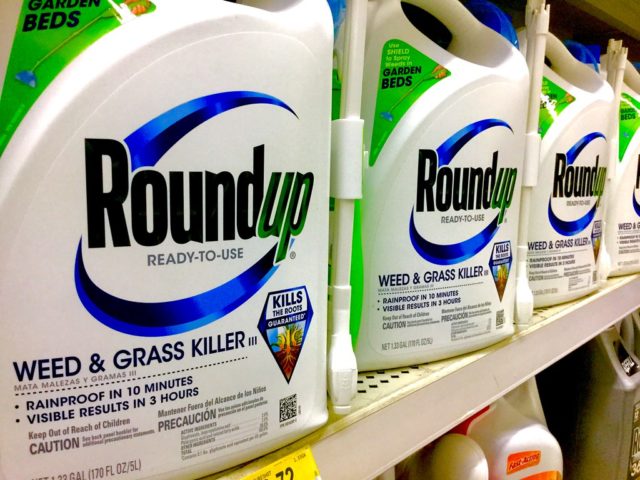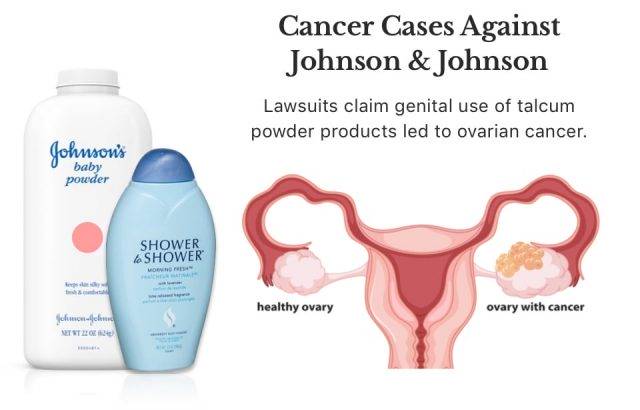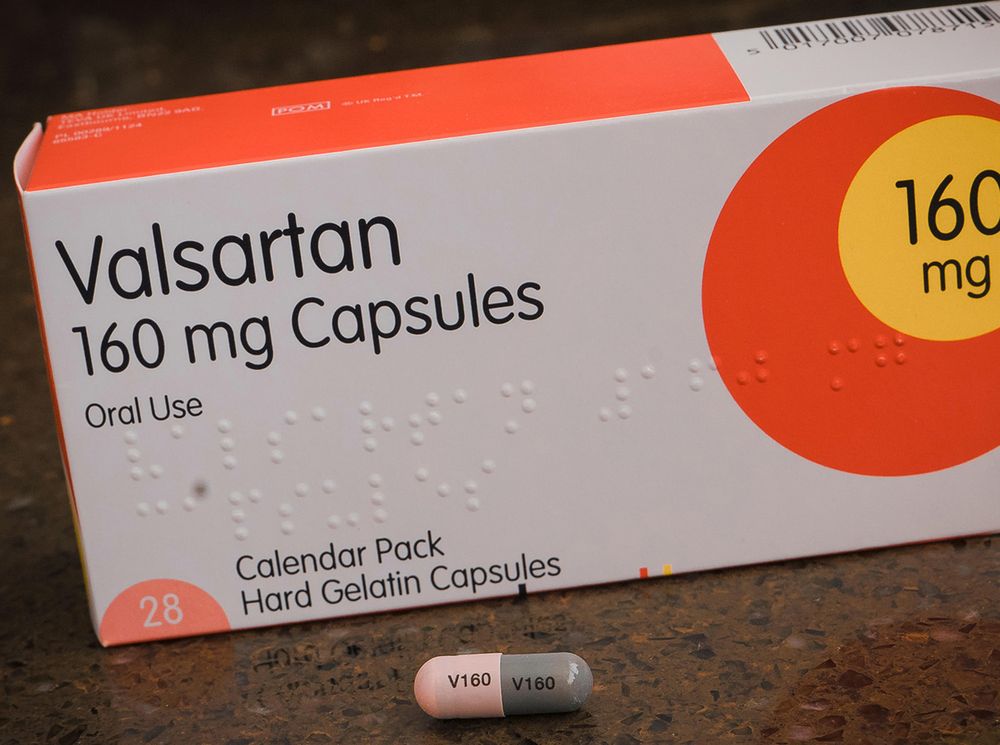If you are a cancer patient, it may be possible that you were exposed to one or more substances which are known carcinogens (an agent that causes cancer), which led to your illness. There are ongoing class action lawsuits involving various industries or products linked to cancer cases, with the purpose of compensating cancer victims for their pain, suffering, and medical-related expenses.
If you believe you might have a claim, use this guide to start with the type of cancer you have, then find possible causes that might lead to your legal claim for damages. Follow the link to learn about the individual cancer-related lawsuits.
You can also call us at (888) 818-8955 or fill out our Cancer Lawsuit questionnaire. We’ll contact you as soon as possible and get you the help you deserve.
Cancer Lawsuit Finder
- Acute Lymphocytic Leukemia
- Acute Myelogenous Leukemia (AML)
- Acute Myeloid Leukemia
- Bladder Cancer
- Chronic Lymphocytic Leukemia
- Chronic Myeloid Leukemia
- Colon Cancer
- Esophageal Cancer
- Intestinal Cancer
- Leukemia (general)
- Liver Cancer
- Vinyl chloride exposure
- Valsartan prescription
- Zantac (Ranitidine) prescription
- Mesothelioma
- Talcum powder exposure
- Asbestos exposure
- Multiple Myeloma
- Non-Hodgkin’s Lymphoma
- Pancreatic Cancer
- Prostate Cancer
- Rectal Cancer
- Stomach (Gastric) Cancer
- Testicular Cancer
General Cancer Lawsuits
Cancer lawsuits seem to be an ongoing staple of American commerce. They happen when a corporation institutes a product, service, or practice which later turns out to have carcinogenic factors. Since this is usually only discoverable after the fact, lawsuits end up being class actions sometimes months to years after the carcinogen exposure.
You may be sure, at least under present health and safety standards, that corporations undertake thorough research to test and clear products on their own. However, carcinogens are a cutting edge science, with more discoveries made in the field every day, whereas a cancer-causing agent may not manifest in affected victims until years out from the encounter. Companies have a moral and legal responsibility to compensate victims for wrongful harm, no matter how unintentionally it was caused.
Here we take a look at what lawsuits are currently valid, which are no longer being pursued, and what future cancer lawsuits might come up.
Finding The Right Cancer Lawsuit and Law Firm
Many of the firms handling class action lawsuits have different requirements or only deal with a few types of cancer cases. Some firms are not up to date on every type of cancer litigation out there, so they may not even be aware of the latest developments in cancer lawsuits.
Some types of lawsuits are also dropped, but you should look at all other cancer lawsuit options for which you may qualify. Industrial liability litigation is a years-long process, with many appeals and counter-claims. Your best bet is to persevere, and keep searching for a claim for which you are eligible.
This cancer lawsuit guide is here to help.
New Cancer-related Litigation Comes Out All the Time
If you or a loved one has cancer or was previously diagnosed with it, there’s a good chance you may have a valid claim against a company for exposing you to harmful materials.
We will be frequently updating this guide to let you know your rights when it comes to potential cancer lawsuits.
Even If You Were Told No Before… It’s Always Worth A Second Look
If you previously called a firm to find they would not accept your claim, first check out this guide to see if you may qualify for another type. Then call us at:
(888) 818-8955
or fill out our Cancer Lawsuit Questionnaire here.
We will only refer you to firms that have a proven track record of successfully litigating cases with appropriate financial resources and excellent customer service. Referring a case costs nothing to you, does not change your case cost, and our success is dependent on yours.
It’s always worth a second look to see if your case qualifies. For example, a client called us regarding a potential Irbesartan claim, but Irbesartan’s link to cancer has been put into question by a recent study, causing law firms to drop Irbesartan claims. However, New research comes out all the time, so a future link between cancer and any substance could always be found.
You can go back to a study led by A. L. Knezevich, who worked on behalf of BioDynamics Inc. to see proof of cancer being caused by products in 1983. The study concluded that Glysophate caused kidney cancer in mice. Glyphosate is a systemic herbicide and crop desiccant, which is the active ingredient in Roundup weed killer.
The study was done by Monsanto, makers of Roundup, which is now the subject of litigation. The study was unpublished. Today there are many studies on the link between these and other products and cancer. An overwhelming majority of new cancer lawsuits are related to pharmaceuticals.
Recently the most advertised and popular cancer lawsuit type to date has been for Mesothelioma, a type of cancer that often is caused by asbestos.
List of Cancer Lawsuits
Click the below list links to learn more information about that lawsuit. As we expand our guide, we’ll link to more in-depth posts for details on each lawsuit type.
Common Scenarios of Cancer Lawsuits:
Active Cancer Lawsuits:
- Actos
- Benzene
- Ethylene Oxide
- Hair Dye & Straighteners
- PFAS / AFFF (firefighter occupational)
- Roundup Weed Killer
- Talcum Powder
- Tobacco
- Valsartan
- Zantac
No Longer Active Cancer Lawsuits:
Occupational Cancer
Occupational cancer lawsuits cover situations in which your job duties led to situations that exposed you to a carcinogen which subsequently led you to contract cancer. We expect this area of cancer litigation to continuously expand.
Here are the most common types of cancers and the type of exposure that caused it:
- Acute Myelogenous Luekemia (AML) – Benzene exposure. Railroad workers are common victims.
- Bladder Cancer – Working in chemical, rubber and leather industries
- Kidney Cancer – Steel plant workers exposed to coke oven, Firefighteres exposed to PFAS from AFFF
- Liver Cancer – Vinyl Chloride exposure
- Mesothelioma – Asbestos exposure
- Testicular Cancer – Firefighters exposed to PFAS from AFFF
There may be other exposure types and resulting cases. If you have a cancer diagnosis and suspect there may be any possible link between this and your past occupational situation, contact us so we can help you review your claim.
You can take our cancer lawsuit questionnaire or call us at (888) 818-8955.
Misdiagnoses Lawsuits
Did you get cancer but you were diagnosed with something else initially? If that led to damage on your part, your doctor and other medical staff might be liable for your cancer misdiagnosis.
Since these fall into the category of medical malpractice suits, they might not be taken on by attorneys in all states. Some states, like California, have malpractice damage limits which prevent attorneys from taking the cases due to their high costs and low recovery.
Take our cancer lawsuit questionnaire to get help with your cancer misdiagnoses lawsuit.
Delayed Diagnosis
In this scenario, the doctor should have found your cancer earlier but it was not uncovered for various reasons. These are not cancer-causation lawsuits, but related to poor cancer treatment. In this 2016 report, delayed diagnosis of cancer might fall into several segments of accountability:
- when the patient fails to recognize and act on suspicious cancer symptoms
- primary care delays occur when a medical practitioner failed to recognize and refer the patient for symptoms relating to cancer
- secondary care delays occur when a patient was specifically referred for cancer screening, but examinations failed to detect the cancer
These cases may be more successful in some states than others due to malpractice lawsuit compensation limits. In order for an action to be successful, the Plaintiff needs to prove not only that the diagnosis was delayed, but that they fulfilled their obligation in reporting symptoms and that their medical situation was worsened by the delayed diagnosis.
Take our cancer lawsuit questionnaire to get help with your Benzene lawsuit.
Future Potential Cancer Lawsuits
New cancer lawsuits are coming out all the time. We will do our best to keep this page up to date with the latest information and pending suits. If you think you may have a claim not covered here, contact us at (888) 818-8955 or on our contact page.
Some cases may be dropped upon new findings, others may develop into legally valid cases later.
Some suits may get dropped after a further study comes out, like what happened with Irbesart and and Losartan. Some types of claims may initially not look like a valid carcinogenic claim lawsuit, then later turn out to be valid due to other factors, such as what has happened with the generic version of Zantac, Ranitidine.
If you have cancer and are seeking out a potential lawsuit claim, keep in mind that there are various developments in findings, claims, and settlements over time.
Actos Lawsuit for Bladder Cancer
Actos is the brand name for Pioglitazone, a drug used to treat type II diabetes and manufactured by Takeda Pharmaceuticals. Turns out it not only treats diabetes but can give you bladder cancer.
A study done in 2016 led by Hulin Tang found a correlation between high doses of Pioglitazone and cancer. That’s the basis for Actos cancer lawsuits.
See the graph below showing the correlation.

Actos Cancer Lawsuit Eligibility
There are a wide range of potential claims regarding Actos lawsuits, but the one we are focusing on here is cancer. Currently, the best eligible persons for an Actos cancer lawsuit are those whom:
- were diagnosed with bladder cancer
- took Actos for at least three (3) months prior to diagnosis
Take our cancer lawsuit questionnaire to get help with your Actos lawsuit.
Belviq Prescription
Belviq and the extended release version Belviq XR is a weight loss drug initially approved in 2012 by the FDA for treating obesity. Lorcaserin is its generic name. It reduces appetite by activating a serotonin receptor in the hypothalamus, which is known to govern appetite.
In February 2020, the FDA published a drug safety communication calling for the withdrawal of the weight-loss drug Belviq and Belviq XR (lorcaserin) from the market. The US weight loss drug, manufactured by Arena Pharmaceuticals, was the subject of a safety clinical trial which showed an increased occurrence of cancer. In a randomized, double-blind, placebo-controlled clinical trial of 12K participants over 5 years, more subjects taking lorcaserin were diagnosed with cancer than the control placebo group.
Belviq lawsuits are still in the early stages as of this writing. Take our cancer lawsuit questionnaire to get help with your Belviq lawsuit.
Benzene Exposure
The majority of claims related to Benzene exposure will come from those exposed due to work. Professions with the highest benzene exposure risk include:
- chemical plant employees
- painters
- paper factory workers
- oil refinery workers
- mechanics
- railway workers
- many other industries
Benzene is hazardous enough that the US CDC has a Chemical Emergencies page on benzene, including its link to cancer as well as various health hazards both immediate and long-term. Benzene is an elementary petrochemical which is naturally present in crude oil. Due to its carcinogenic risk, benzene is limited to less than 1% of the components of gasoline, yet its sweet smell is unmistakable in the fuel.

Exposure to Benzene can lead to the following types of cancers:
- Acute Lymphocytic Leukemia
- Acute Myeloid Leukemia
- Chronic Lymphocytic Leukemia
- Chronic Myeloid Leukemia
- Multiple Myeloma
- Non-Hodgkin’s Lymphoma
Benzene Lawsuit Eligibility
The best eligible persons for a cancer-related Benzene lawsuit action would be those whom:
- experienced one year or more of Benzene exposure
- subsequently developed cancer
Take our cancer lawsuit questionnaire to get help with your Benzene lawsuit.
Ethylene Oxide
Ethylene Oxide, often shortened to EtO, has been pumped into the air by companies like Sterigenics. The problem here is two-fold. Private industry is pumping out Ethylene Oxide, yet the EPA standards according to some are not strict enough as is.

Ethylene Oxide is both a tremendously useful chemical with applications throughout every industry worldwide, yet it is also a highly hazardous substance which requires tight regulation and vigilant handling. It is an important raw material upon which most chemical production depends, while by itself it is used as everything from a disinfectant to a fungicide to thermobaric weapons. It explodes at room temperature upon contact with air. Industries with high ethylene oxide exposure risks include:
- Chemical plants which produce solvents, antifreeze, textiles, detergents, adhesives, and polyurethane foam
- Some agricultural industries requiring pesticides
- Hospitals which use it to sterilize supplies
From EPA.gov: Evidence in humans indicates that exposure to ethylene oxide by inhalation increases the risk of lymphohematopoietic cancers. These may include:
- Non-Hodgkin Lymphoma
- Myeloma
- Lymphocytic Leukemia
- Breast Cancer
Only some areas are affected by this, but it’s worth looking into if you have one of the above-listed cancers.
Take our cancer lawsuit questionnaire to get help with your Benzene lawsuit.
Hair Dye and Straighteners Causing Breast Cancer

A recent study concluded that permanent chemical hair dyes used by woman every 6 to 8 weeks may increase the risk of developing breast cancer. In African American women, the rate increased by up to 60% and 8% in white women.
The study also found an overall 9% increase in breast cancer diagnoses from women who used a hair dye product at least once in the last year.
Chemical hair straighteners, commonly used by African American women, were also a subject of the study finding that there may be up to a 30% increase in the likelihood of developing cancer for these women. One of the ingredients in some hair straighteners is formaldehyde, which is a known carcinogen.
If you have used hair dye or hair straightener and have been diagnosed with cancer, take our cancer lawsuit questionnaire and we’ll see if your claim can be pursued.
PFAS Exposure From AFFF – Firefighters and Other Occupations

Foam products used to fight fires have now been shown to cause kidney and testicular cancer. Aqueous film forming foam (AFFF) contains polyfluoralkyl and perflouroalkyl substances (PFAS). PFAS are a group of man-made chemicals in use since the 1940s.
These substances are now known carcinogens, with the most common victims being firefighters exposed as an occupational hazard. If you have been exposed to PFAS by a AFFF, and were later diagnosed with kidney or testicular cancer, you may have a valid claim.
Take our cancer lawsuit questionnaire to get help with your PFAS cancer lawsuit.
Roundup Weedkiller Exposure Leading to Cancer
Exposure to the weedkiller Roundup has led to numerous cancer claims. A study linked Roundup to cancer yet Monsanto did nothing to mitigate the damage. Roundup is the most commonly used weed-killer in the agricultural industry. Heavy exposure to Roundup usually occurs as an occupational hazard to agricultural workers.

Roundup background
Manufactured since the 1970s, Roundup’s active ingredient, glyphosate, is a salt-classified engineered chemical invented and patented by Monsanto. Other ingredients include polyethoxylated tallow amine (POEA), which helps the spray stick to weeds. Roundup is a “contact killer,” meaning that it won’t work saturated into the soil, but must be sprayed liberally on the plants. Glyphosate works in two ways: by interrupting the plants’ biological processes, and acting as a desiccant, which means it dries up the plant.
Roundup is thus a constant presence in any agricultural operation. So much so that Monsanto also genetically engineered “Roundup-ready” crop breeds, specially designed to withstand the weed-killer while allowing the crop to flourish. Monsanto is embedded in the American agricultural industry to the point that it is a candidate for antitrust litigation.
- International Agency for Research on Cancer (IARC) study (2015) ruled glyphosate is “probably carcinogenic to humans.”
- California Environmental Protection Agency’s Office of Environmental Health Hazard Assessment study (2017) declared glyphosate a known carcinogen.
- U.S. Agency for Toxic Substances and Disease Registry report (2019) confirmed glyphosate is correlated with increased cancer risk.
- ResearchGate paper published in 2019 finds strong link between Glyphosate-Based Herbicides and Risk for Non-Hodgkin Lymphoma.
Since Roundup is so commonly used, this is one of the most popular claims and many cancer patients may fall under this category. In order to sue in the US though, your exposure must also have occurred in the US.
Talcum Powder
Talcum powder seemed harmless, but it’s now been shown to be linked to an increased likelihood of developing ovarian and mesothelioma cancers. Johnson & Johnson was forced to recall their baby powder in the late 2010s.

Ovarian Cancer and Talcum Powder
There’s two factors to consider regarding Talcum powder causing ovarian cancer:
- Talcum contained asbestos particles
- Regular use of Talcum powder in the genital area allows for small particles to travel into the ovaries causing chronic inflammation. Chronic inflammation can lead to cancer.
This critical review goes over many of the studies linking Talcum powder to Ovarian cancer.
Talcum Powder and Meseothelioma
There’s a link between Talcum powder and an increased chance of developing Mesothelioma, a common lung cancer.
It comes down to a build-up in the lungs of asbestos particles that are present in the Talcum powder.
Get help with a Talcum Lawsuit
Take our cancer lawsuit questionnaire to get help with your Talcum cancer lawsuit.
Tobacco Lawsuits
There are some that still may be eligible for these types of lawsuits. If you are a tobacco user who has cancer or did previously, it’s worth having your information reviewed to see if tobacco might be the cause of your cancer.
Not a lot of firms are pursuing these, since the link between smoking and cancer is both well-known and required information on tobacco product packaging, but we can help evaluate your case and get you to someone who may be able to take your case.
Take our cancer lawsuit questionnaire to get help with your Tobacco cancer lawsuit.
Valsartan – Limited Time Periods of Consumption

Successful Valsartan plaintiffs will most likely be those whom took it for a year or more after 2014 and the developed one or more of the following cancers:
- Colon
- Esophageal
- Intestinal
- Leukemia
- Liver cancer
- Multiple Myeloma
- Non-Hodgkins Lymphoma
- Pancreatic
- Prostate
- Rectal
- Stomach cancer
Although other “sartan” drugs like Irbersartan and Losartan have been removed from most law firm’s case list, Valsartan remains an active claim.
Take our cancer lawsuit questionnaire to get help with your Valsartan cancer lawsuit.
Zantac Cancer Lawsuits
Zantac is a brand name of ranitidine, a commonly prescribed medication to decrease stomach acid. It is prescribed for peptic ulcers, acid reflux, and Zollinger–Ellison syndrome. New findings have brought to light the possibility for Zantac to contain a nitrosamine impurity known as N-nitrosodimethylamine (NDMA), a cancer-causing agent.
The FDA has removed ranitidine products from the market based on concerns over NDMA contamination, which increases in risk if the product is stored at higher than room temperatures. NDMA is known to cause cancers including:
- bladder cancer
- pancreatic cancer
- stomach cancer
- brain cancer
If you took Zantac between 1983 and 2020, and have one of these cancers, you may be eligible to a claim as plaintiff in the ongoing class action lawsuit. Take our cancer lawsuit questionnaire to get help with your Zantac cancer lawsuit.
No Longer Active – Irbesartan, Losartan
Both of these drugs were initially included in many initial cancer lawsuits, but later they were dropped due to a new study weakening the link between cancer and these medications.
Some persons who did not qualify under these conditions are told they have no case. The proper analysis is to see what other claims might be viable.
Recently a client from a rejected Irbesartan claim qualified for a different cancer lawsuit because he also has been exposed to Roundup. If you were told you had a cancer claim, then later told you did not, check this cancer lawsuit guide out to see if there is something else you might qualify for.
You can also call us at (888) 818-8955 and we can look at other potential options.
